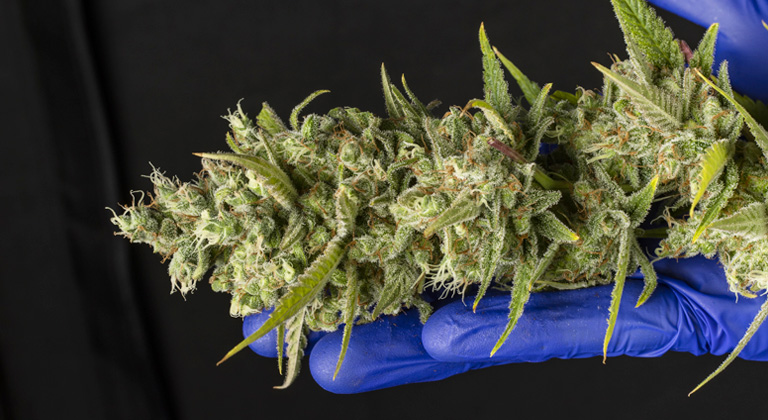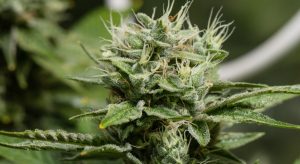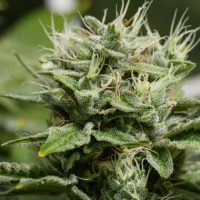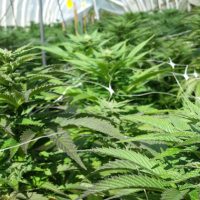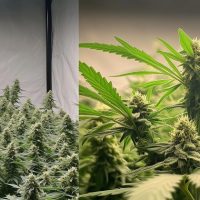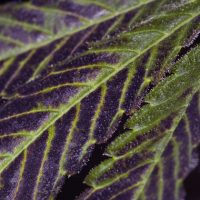Selecting the right cannabis seeds
Choosing the right cannabis seeds is key to obtaining those amazing aromas and flavors. Although the cannabis plant is known for having a generally complex and intense aromatic profile, strains like Gorilla Glue or Lemon King are particularly aromatic due to their incredibly high terpene production.
Growing conditions for improving the yield and preserving the aroma and flavor of your cannabis plants
Terpenes are the molecules responsible for the aroma and flavor of cannabis. These compounds are found in the resin of the buds and can fluctuate in quantity depending on the environmental conditions of the grow.
Here we explain what parameters you need to consider to obtain top-notch flavors and aromas.
Temperatures for growing marijuana: Keep it cool
Terpenes are more volatile than cannabinoids, meaning they evaporate and get lost at lower temperatures. This is one of the reasons why sometimes crops can be rich in cannabinoids (so their flowers produce psychoactive effects) but are poor in aroma and flavor.
High temperatures (above approximately 26 degrees), or drastic temperature changes (hot-cold), can result in loss of terpenes.
To preserve the aroma of your buds, it’s important to maintain minimum temperatures around 20ºC, and maximum temperatures between 23 and 24ºC.
For indoor growing, LED lighting systems are recommended, as they lead to excellent yields and do not generate as much heat as HPS lighting systems or LEC lights.
If your lighting equipment is HPS or LEC, always keep a distance of about 50 cm from the light to the top of the plant, raising the lights with yo-yos or pulleys as the plants grow.
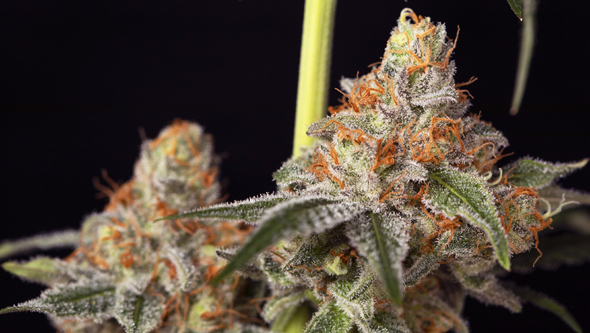
In an indoor grow, it’s important to have a good ventilation and extraction system, and use adjustable extractors. This way, you can increase the power if needed to reduce the temperature of the room or grow tent. Nonetheless, the most efficient method to control the temperature in an indoor crop is by using air conditioning.
If you are growing cannabis outdoors, you won’t have as much control over the temperature, but you can use some strategies to reduce the heat. Using geotextile pots and a shading net in the hottest hours, or choosing a well-aired location, are some of the tactics you can put in place to prevent your flowers from losing their treasured aroma.
Another parameter that you should also consider to maximize terpene production is humidity:
- Reduce ambient humidity to 40-50% during the flowering stage. Not only does this prevent fungi like powdery mildew or botrytis from settling in your crop, but it also encourages plants to produce more terpenes.
Light, a critical factor for terpene production
The production of terpenes in cannabis plants is directly related to the amount and quality of light that they receive. If you’re planning to grow indoors, LED lights will be your best ally in this sense, as they produce a full spectrum and are very efficient at enhancing the smell and taste of the flowers.
Pruning and training techniques: optimize every inch
As we’ve just mentioned, light is an essential factor for the production of terpenes. For this reason, some pruning and training techniques such as topping, Screen of Green (SCROG), or Low Stress Training (LST), can be highly beneficial in improving the plant’s light exposure, leading to higher aromatic and taste development.
Controlled Stress, a small trick to boost the amount of resin
The terpenes responsible for the delicious smell of cannabis are actually a plant protection system to ensure its survival.
Applying controlled stress techniques such as light defoliation or mild water stress, can stimulate the plant to produce more of these tasty molecules in order to protect itself.
Having said that, these techniques should only be applied if you have at least a basic understanding of cannabis growing, or else they could prove counterproductive as the plants could be damaged.
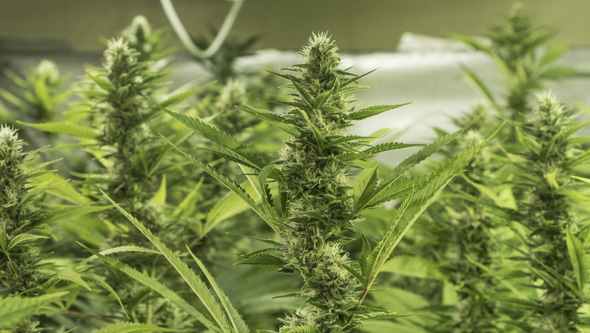
How to fertilize your marijuana plants to enhance their aroma and flavor
Proper nutrition is essential to boost the production of terpenes, since, in general, the healthier your cannabis plants are, the higher the quality of their yield.
To do this, remember to use a balanced fertilizer that includes all the macronutrients (nitrogen, phosphorus, and potassium) and micronutrients that your plants need, adjusting the quantities based on their stage of life, needs, and type of fertilizer.
Additionally, it’s advisable to use humic and fulvic acids to aid nutrient absorption and increase the production of terpenes. You can also use Mycorrhizae for the soil, which helps keep the roots healthy and promotes the appearance of beneficial soil microorganisms.
Organic or mineral fertilizers? Nutrition to improve the taste of cannabis?
The choice of fertilizer you use will play a very significant role in the aroma and taste of your cannabis buds.
When choosing between organic, bio-mineral, or mineral fertilizers, consider what your main objective is. If one of your priorities is for your harvests to be of superior organoleptic quality, organic or biological fertilizers are without a doubt the best choice.
Organic fertilizers do not muddy the taste of cannabis the way mineral fertilizers can. They also decompose slowly and promote the appearance of beneficial soil microorganisms.
If you still choose mineral fertilizers, make sure you do a good root flushing about ten days before harvest to eliminate any trace of these products. If this isn’t done properly, your buds can cause that uncomfortable “throat itch” and unpleasant taste when inhaled.
The best time to harvest your cannabis buds: Obtain an out-of-this-world taste
Determining the optimal time to harvest is crucial for maximizing the aroma and flavor of your cannabis flowers.
Trichomes (i.e., those small glands present in cannabis buds) change color as the ripening point of these flowers progresses. Hence, they turn from translucent to milky, and later to amber.
- When most of the trichomes have turned a milky color and a small portion (about 20%) have turned amber, then it’s time to harvest.
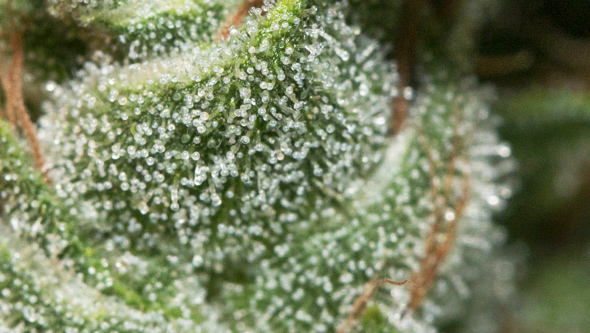
Control of pests and diseases: Choose the right products
The use of chemical pesticides can alter the aromatic profile of cannabis. For this reason, as well as for safety reasons, it’s advisable to always use biological insecticides and fungicides, and carry out preventive measures to avoid unnecessary headaches.
Drying and curing of cannabis buds: Don’t slack off!
Many growers make the mistake of underestimating the effect that the drying and curing procedures can have on the aroma and taste of cannabis. To achieve premium quality cannabis, executing these final steps correctly is vital.
How to dry marijuana flowers to maximize their aroma
To obtain superior tasting cannabis, you should dry the buds slowly, under appropriate humidity and temperature conditions. This will prevent the degradation of the terpenes.
- The ideal temperature for drying buds is between 18 and 22°C; and the optimal relative humidity (RH) should be around 60% for the first 7 days.
Curing of cannabis: The final touch for a unique taste experience
Many growers skip the process of curing marijuana because, after having waited for months to sample the delicious fruits of their labor, they just can’t wait any longer. However, those with more refined taste buds know that the wait is definitely worth it.
During the marijuana curing process, the remaining moisture in the buds is gradually reduced to about 25%, while chlorophyll is broken down, which significantly improves its taste.
Removing chlorophyll is very important for flavour, as its presence can reveal a taste of “fresh grass” that is not particularly appreciated by users.
Curing cannabis normally takes about a month, and during this process it’s important to avoid direct light on the marijuana buds.
For proper curing, the flowers should be stored in untreated wooden boxes or in airtight opaque jars. To ensure better terpene preservation, it’s best to choose airtight plastic jars and ventilate the buds regularly (a few minutes a day), so that the accumulated moisture is gradually released.
Conclusion
Improving the aroma and flavor of your marijuana buds is an art that requires a bit of attention and dedication. With just a little TLC, you’ll see impressive results.
That’s why many growers choose these simple strategies to improve the aroma of their buds, as they are rewarded with a more pleasurable experience and higher quality cannabis… Bon appetit!
And remember: If you have any doubts or opinions on this topic, please leave your comment and share it with our community!
